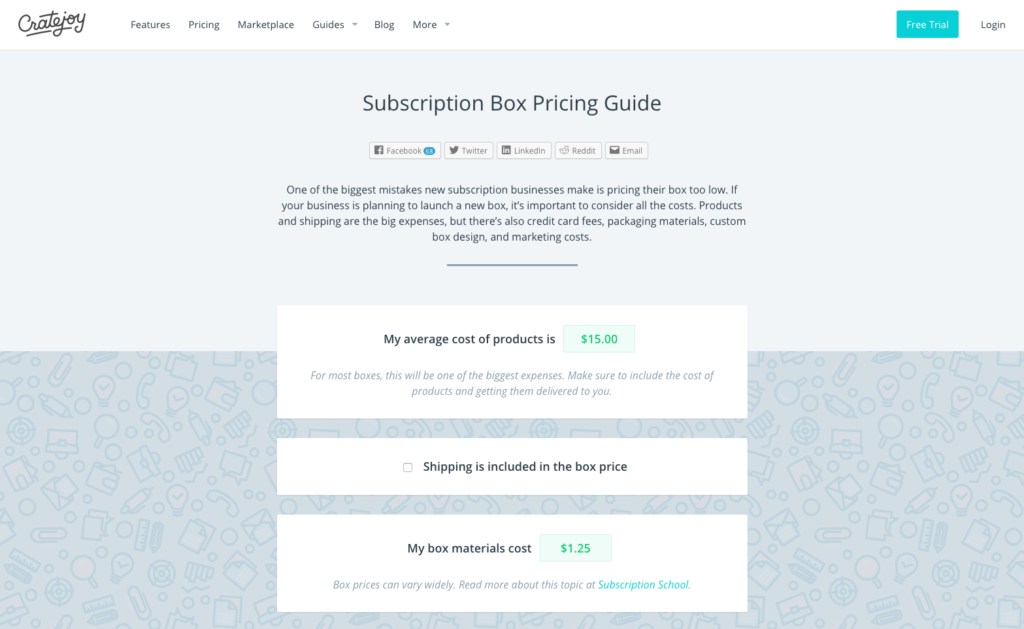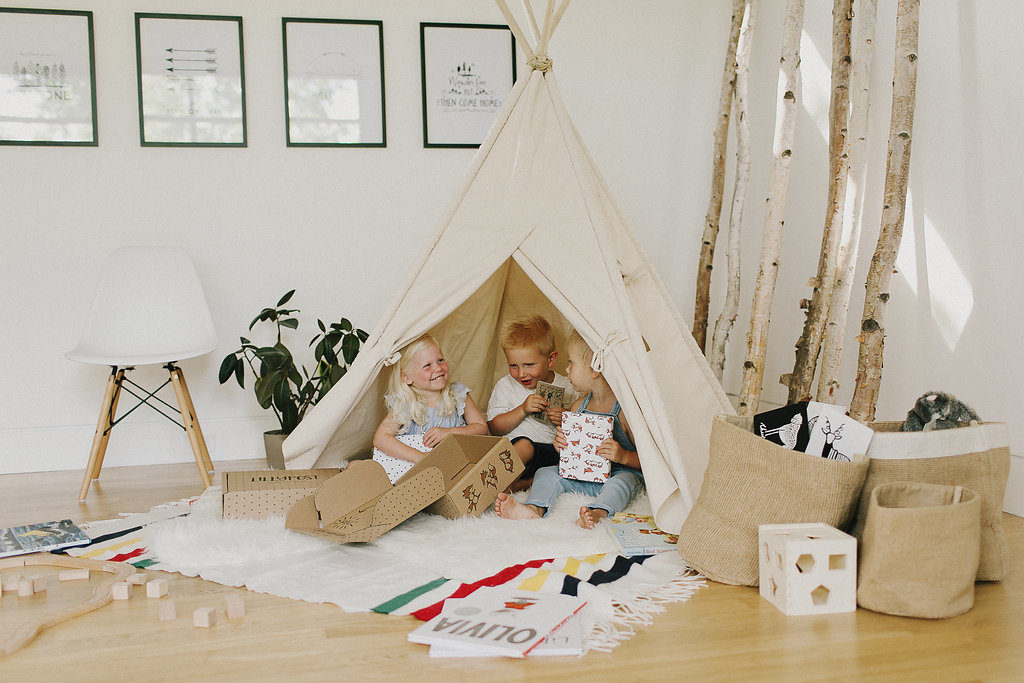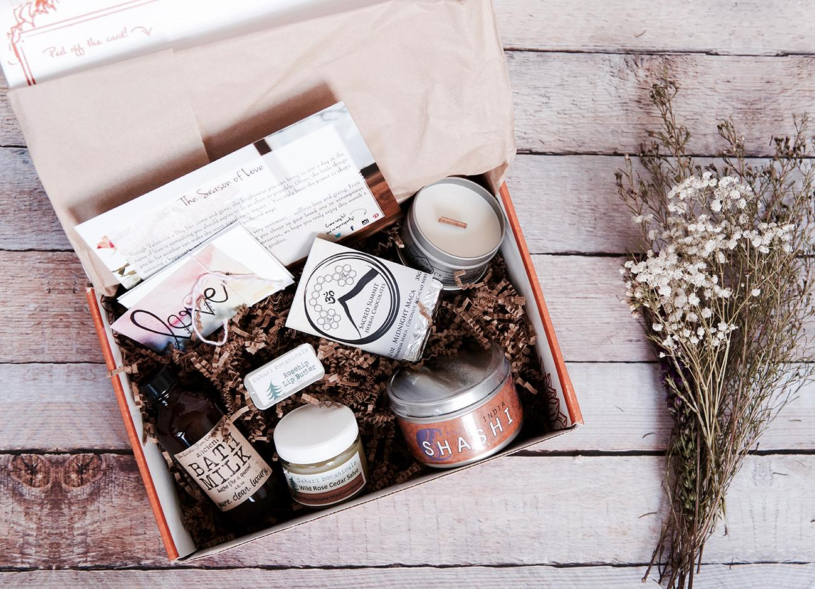Creating a prototype box is the first tangible step towards building your subscription box business. It’s an exercise that will help inform the type of products to offer, the kind of packaging you’ll need, and the price point of the box.
In this piece, we’ll cover those topics and more, as well as provide in-depth resources for some of the more complex decisions you’ll have to make as a subscription box owner.
Table of Contents
- How to Price a Product
- Box Size and Weight
- Subscription Box Products
- Box Fillers + Inserts
- Box Design and Branding
- Manufacturing and Packaging
- Get Feedback
- How to Photograph Your Subscription Box
- Start Selling Your Subscription Box
How to Price a Product
If you plan to sell a subscription box in a $25-30 price range, the price of your products should be $9-12 or less. This might seem low, but there’s a number of costs associated with sourcing the box itself and running the business.
Try it out: If you’re looking for more guidance around pricing and cost of goods, experiment with our pricing calculator to figure out what makes sense for your subscription box. From there, you can estimate your total startup costs with our startup calculator!

Box Size and Weight
Choosing the right box size is something that sellers agonize over. Small boxes are cheaper to ship, but limit the size of products that can be included. Larger boxes have plenty of space, but can be difficult to fill each month.
Start by getting an idea of shipping rates. Cratejoy has a calculator that helps estimate the price of shipping with different box sizes and weights. If you would like to keep shipping costs under $10 per box, you’ll need to be careful about the weights and dimensions of your products.
One of the least expensive options for shipping your products is to use Cratejoy boxes. They’re specially designed to stay within Tier 1 and Tier 2 cubic shipping rates for USPS, which means you’ll have a guaranteed flat rate based on the box size.
Here’s some more information about the different shipping carriers:
- The Best Carriers for Subscription Box Shipping
- 6 Ways Subscription Box Companies Can Save Money on Shipping
Subscription Box Products
Unless you’re starting a box business that ships your own goods each month, you’ll need to figure out a strategy for curating products. This includes deciding what you’ll put in your box and who will put it together.
- 7 Places to Source Products for Subscription Boxes
- 6 Tools and Tips for Streamlining Your Procurement Process
- Webinar: Product Sourcing for Subscription Boxes
Subscription Box Fillers and Inserts
This element of box building is both experiential and practical. Even if your box isn’t packed with fragile items, filler paper can make your box feel more full while still protecting the contents inside. Similarly, inserts can expand on the products in your box while adding the experiential element of further branding your monthly theme.
- Types of Packing Material for Subscription Boxes
- How to Make Packing Lists For Subscription Boxes ( And 15+ Examples)
Subscription Box Design and Branding

Branding is defined as the process of establishing a significant and differentiated presence in the market. For most businesses, that can mean choosing a meaningful color palette, a strong name, good design, and powerful imagery. Your box should combine these elements and use them repeatedly across your products, advertising, and social platforms.
As you put together your prototype box, start thinking about the overall branding message you want to deliver. Here are some resources to get you started:
- Branding and Product Development for Subscription Boxes
- Basic Elements of Compelling Design
- 4 Tips for Selecting an Awesome Trademark
Box Manufacturing and Packaging
Once you’ve determined the products, box sizing, and branding, you’ll need to research box manufacturing and custom printing. The box design and type of materials will have a huge impact on your customer’s perception of the products.
If you’re not ready to invest in a lot of custom design and bulk order of boxes, consider using stickers, labels, or stamps to brand the outside.
Here are a few resources about custom packaging for subscription boxes:
- Everything You Need To Know About About Custom Packaging for Subscription Boxes
- Creating Custom Packaging: A Checklist
- Custom Subscription Box Packaging: A Comprehensive Report on 30+ Manufacturers
Get Feedback
Feedback from friends and family will help you refine your box before launch. Do people like the products? Is it something they would consider buying? Is the pricing right?
You can also post images of your box and products to forums like the Subscription School Facebook group to get feedback from other entrepreneurs.
How to Photograph Your Subscription Box

When you have a finished box and products, make sure to get quality photography to use on your website, ads, and marketplace listings. Customers are more likely to trust the quality of your box and products if there are great images.
To further distinguish your brand, show the box in real-life environments (for example, kids playing with a new science box or a couple cooking with a new baking box) as well as closeups of the box and products. If possible, hire a professional to help with your shoot – they will have the right equipment (lenses, light tents, and editing software) as well as the expertise to make your box stand out.
Start Selling Your Subscription Box
After your box is finished, you’re ready for a prelaunch campaign. Sign up with Cratejoy to use our prelaunch template, and then publish the website when you’re ready to start making sales.
More Questions?
For more advice, check out our guide on Tips for Getting Started with Your Subscription Box Business, then our more complete overview on How to Start a Subscription Box Business in 8 Simple Steps.
Cratejoy is an all in one subscription commerce platform that includes everything you need to start your own subscription commerce business online. Try it free for 14 days.
